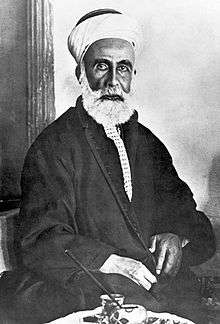Hashemites
| House of Hashim الهاشميون Hashemites | |
|---|---|
 Coat of arms of Jordan | |
| Parent house | Dhawu Awn, a branch of Banu Qatadah, of Banu Hasan, of Banu Hashim, of Quraysh |
| Country | Hejaz (in present-day Saudi Arabia), Syria, Iraq, Jordan |
| Ethnicity | Arab |
| Founded |
1916 in Hejaz 1920 in Syria 1921 in Iraq and Jordan |
| Founder | Hussein ibn Ali |
| Current head |
Jordan: Abdullah II Iraq: Ra'ad bin Zeid |
| Final ruler |
Ali in Hejaz Faisal I in Syria Faisal II in Iraq |
| Titles |
|
| Deposition |
1920 in Syria (Franco-Syrian War) 1925 in Hejaz (Saudi conquest) 1958 in Iraq (14 July Revolution) |

 |
|---|
| This article is part of a series on the politics and government of Jordan |
|
|
|
Related topics |
|
|
| Historical Arab states and dynasties | ||||||||||||||||||||||||||||||||||||||||||||||||||||||||||||
|---|---|---|---|---|---|---|---|---|---|---|---|---|---|---|---|---|---|---|---|---|---|---|---|---|---|---|---|---|---|---|---|---|---|---|---|---|---|---|---|---|---|---|---|---|---|---|---|---|---|---|---|---|---|---|---|---|---|---|---|---|
 | ||||||||||||||||||||||||||||||||||||||||||||||||||||||||||||
|
Ancient Arab States
|
||||||||||||||||||||||||||||||||||||||||||||||||||||||||||||
|
Eastern Dynasties
|
||||||||||||||||||||||||||||||||||||||||||||||||||||||||||||
|
Western Dynasties
|
||||||||||||||||||||||||||||||||||||||||||||||||||||||||||||
|
Arabian Peninsula
|
||||||||||||||||||||||||||||||||||||||||||||||||||||||||||||
|
Current monarchies
|
||||||||||||||||||||||||||||||||||||||||||||||||||||||||||||
The Hashemites (Arabic: الهاشميون, Al-Hāshimīyūn; also House of Hashim) are the ruling royal family of Jordan. The House was also the royal family of Syria (1920), Hejaz (1916–1925) and Iraq (1921–1958). The family belongs to the Dhawu Awn, one of the branches of the Hasanid Sharifs of Mecca – also referred to as Hashemites – who ruled Mecca continuously from the 10th century until its conquest by the House of Saud in 1924. Their eponymous ancestor is Hashim ibn Abd Manaf, great-grandfather of the Islamic prophet, Muhammad.
The current dynasty was founded by Sharif Hussein ibn Ali, who was appointed as Sharif and Emir of Mecca by Sultan Abdul Hamid II in 1908, then in 1916 was proclaimed King of the Arab Lands (but only recognized as King of the Hejaz) after initiating the Arab Revolt against the Ottoman Empire. His sons Abdullah and Faisal assumed the thrones of Jordan and Iraq in 1921.
Members
Main branch
- The King and Queen (The monarch and his wife)
- The Crown Prince (The King's elder son)
- Princess Iman (The King's elder daughter)
- Princess Salma (The King's younger daughter)
- Prince Hashem (The King's younger son)
Queen Noor's family
Queen Noor (King Hussein's widow)
- Prince Hamzah and Princess Basmah (The King's half-brother and half-sister-in-law)
- Princess Haya (The King's niece)
- Princess Zein (The King's niece)
- Princess Noor (The King's niece)
- Princess Badiya (The King's niece)
- Prince Hashim and Princess Fahdah (The King's half-brother and half-sister-in-law)
- Princess Haalah (The King's niece)
- Princess Rayet (The King's niece)
- Princess Fatima (The King's niece)
- Prince Hussein (The King's nephew)
- Princess Iman (The King's half-sister)
- Princess Raiyah (The King's half-sister)
Queen Alia's family
- Princess Haya (The King's half-sister)
- Prince Ali and Princess Rym (The King's half-brother and half-sister-in-law)
- Princess Jalila (The King's niece)
- Prince Abdullah (The King's nephew)
Princess Muna's family
Princess Muna (The King's mother)
- Prince Faisal and Princess Zeina (The King's brother and sister-in-law)
- Princess Ayah (The King's niece)
- Prince Omar (The King's nephew)
- Princess Sara (The King's niece)
- Princess Aisha (The King's niece)
- Prince Abdullah (The King's nephew)
- Prince Muhammad (The King's nephew)
- Princess Alia (The King's ex-sister-in-law)
- Princess Aisha (The King's sister)
- Princess Zein (The King's sister)
Princess Dina's family
Princess Dina (King Hussein's first wife)
- Princess Alia (The King's eldest half-sister)
Descendants of King Talal
Prince Muhammad and Princess Taghrid (The King's uncle and aunt)
- Prince Talal and Princess Ghida (The King's cousin and cousin-in-law)
- Prince Hussein (The King's first cousin once removed)
- Prince Muhammad (The King's first cousin once removed)
- Princess Rajaa (The King's first cousin once removed)
- Prince Ghazi and Princess Areej (The King's cousin and cousin-in-law)
- Princess Tasneem (The King's first cousin once removed)
- Prince Abdullah (The King's first cousin once removed)
- Princess Jennah (The King's first cousin once removed)
- Princess Salsabil (The King's first cousin once removed)
Princess Firyal (The King's ex-aunt)
Prince Hassan and Princess Sarvath (The King's uncle and aunt)
- Princess Rahma (The King's cousin)
- Princess Sumaya (The King's cousin)
- Princess Badiya (The King's cousin)
- Prince Rashid and Princess Zeina (The King's cousin and cousin-in-law)
- Prince Hassan (The King's first cousin once removed)
- Prince Talal (The King's first cousin once removed)
Princess Basma (The King's aunt)
Descendants of King Abdullah I
Prince Ali and Princess Reema (King Hussein's cousin and cousin-in-law)
- Prince Muhammad and Princess Sima (The King's second cousin and his wife)
- Prince Hamzah (The King's second cousin)
- Princess Rania (The King's second cousin)
- Princess Karma (The King's second cousin)
- Prince Haidar (The King's second cousin)
- Princess Na'afa (The King's second cousin)
- Princess Rajwa (The King's second cousin)
- Princess Basma Fatima (The King's second cousin)
Prince Asem and Princess Sana (King Hussein's cousin and cousin-in-law)
- Princess Yasmine (The King's second cousin)
- Princess Sara (The King's second cousin)
- Princess Noor (The King's second cousin)
- Princess Salha (The King's second cousin)
- Princess Nejla (The King's second cousin)
- Prince Nayef (The King's second cousin)
- Prince Musa bin Ismaeel (The King's third Cousin) and his sons
- Prince Ahmed bin Musa (The King's third cousin)
- Prince Prince Ali bin Musa (The King's third cousin)
- Prince Muhammed bin Musa (The King's third Cousin)
- Prince Mahmmud bin Musa (The King's third cousin)
- Prince Ismaeel bin Musa (The King's third Cousin)
- Princess Hannan bint Musa (The King's third cousin)
- Prince Ibrahim bin Ahmed (The King's fourth cousin/uncle)
- Prince Omar bin Ali (The King's fourth cousin/uncle)
- Prince Khaled bin Ali (The King's Fourth cousin/uncle)
- Princess Dana bint Ahmed ( The King's fourth cousin/uncle)
- Prince Saleem bin Ahmed (The King's fourth Cousin/uncle)
- Prince Musa bin Mahmmud (The King's fifth cousin/uncle)
- Princess Nida bint Ismaeel (The Kings's fourth cousin/uncle)
- Princess Rawan bint Ismaeel (The King's fourth cousin/uncle)
- Princess Sofia bint Ismaeel (The King's fourth cousin/uncle)
- Princess Ilisar bint Ismaeel (The King's fourth cousin/uncle)
- Princess Sereen bint Ismaeel ( The King's fourth cousin/uncle)
- Prince Yusuf bin Muhammed (The King's fifth cousin/uncle)
- Prince Yaseen bin Muhammed (The King's fifth cousin/uncle)
- Princess Lara bint Muhammed (The King's fifth cousin/uncle)
- Princess Mira bint Mahmmud (The King's fifth cousin/uncle)
History

The Hashemites claim to trace their ancestry from Hashim ibn 'Abd Manaf (died c. 497 AD), the great-grandfather of the Islamic prophet Muhammad, although the definition today mainly refers to the descendants of Muhammad's daughter Fatimah.[1] The early history of the Hashemites saw them in a continuous struggle against the Umayyads for control over who would be the caliph or successor to Muhammad. The Umayyads were of the same tribe as the Hashemites, but a different clan. After the overthrow of the Umayyads, the Abbasids would present themselves as representatives of the Hashemites, as they claimed descent from Abbas ibn ‘Abd al-Muttalib, an uncle of Muhammad. Muhammad's father had died before he was born, and his mother died while he was a child, so Muhammad was raised by his uncle Abu Talib ibn ‘Abd al-Muttalib, chief of the Hashemites.[2]
From the 10th century onwards, the sharif (religious leader) of Mecca and its emir was, by traditional agreement, a Hashemite. Before World War I, Hussein bin Ali of the Hashemite Dhawu-'Awn clan ruled the Hejaz on behalf of the Ottoman sultan. For some time it had been the practice of the Sublime Porte to appoint the Emir of Mecca from among a select group of candidates. In 1908, Hussein bin Ali was appointed to the Emirate of Mecca. He found himself increasingly at odds with the Young Turks in control at Istanbul, while he strove to secure his family's position as hereditary emirs.
During and after World War I
Sharif Hussein bin Ali rebelled against the rule of the Ottomans during the Arab Revolt of 1916.[3] Between 1917 and 1924, after the collapse of Ottoman power, Hussein bin Ali ruled an independent Hejaz, of which he proclaimed himself king, with the tacit support of the British Foreign Office. His supporters are sometimes referred to as "Sharifians" or the "Sharifian party". Hussein bin Ali's chief rival in the Arabian Peninsula, the king of the Najd (highlands), Ibn Saud, annexed the Hejaz in 1925 and established his own son, Faysal bin Abdulaziz Al Saud, as governor. The region was later incorporated into Saudi Arabia.
Hussein bin Ali had five sons:
- Ali, who briefly succeeded to the throne of Hejaz before its loss to the Saud family in 1925.
- Abdullah, became the amir of Transjordan in 1921 and king of Jordan in 1946, and whose descendants continue to rule the kingdom known ever since as the Hashemite Kingdom of Jordan.
- Faisal, briefly proclaimed King of the Arab Kingdom of Syria in 1920, became King of Iraq in 1921.
- Prince Zeid bin Hussein, who moved to Jordan when his brother's grandson, King Faisal II of Iraq, was overthrown and murdered in a coup in 1958.
- Hassan, died at a young age.
Family tree
See also
References
- ↑ T. E. Lawrence (1926), Seven Pillars of Wisdom, reprinted 2000, Penguin Classics, p. 48
- ↑ Time-Life Books, What Life Was Like: In the Land of the Prophet, p. 17
- ↑ T. E. Lawrence (1926), Seven Pillars of Wisdom, reprinted 2000 Penguin classics, p. 53
- ↑ Kamal Salibi (15 December 1998). The Modern History of Jordan. I. B. Tauris. Retrieved 7 February 2018.
- ↑ "Hashemite Ancestry". alhussein.gov. 1 January 2014. Retrieved 8 February 2018.
- Strovolidou, Emilia. "A young Palestinian law student's long journey to integration". UNHCR. Cyprus: Hsahemite young boy.
- Mcnamra, Robert. The Dream of Arabia. Haus Paublishing. ISBN 9781905791668.
![]()